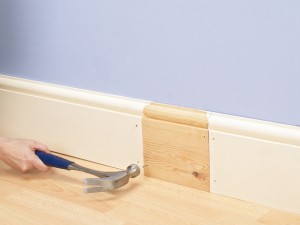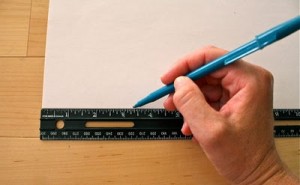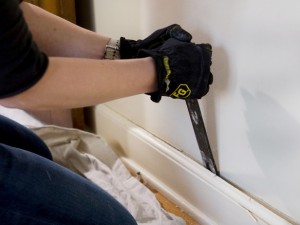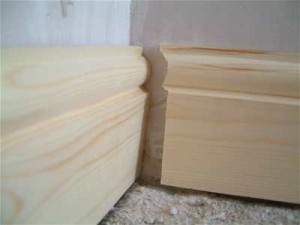We use cookies to make your experience better. To comply with the EU GDPR e-Privacy directive, we need to ask for your consent to set cookies. Learn more.
How to Fit Skirting Board
 Image courtesy by: diynetwork.com
Image courtesy by: diynetwork.com
This blog post will teach you how to fit skirting board with little or no experience at all. Although it can be a bit tricky for first-timers, by using the right tools and following the instructions given below, you'll have no problem and you'll be able to save on labour costs.
Tools required for fitting skirting board:
- Skirting board
- Pencil
- Mitre saw
- Hammer
- Chisel
- Utility knife
- Crowbar.
- Cable detector
- Coping saw
- Tape measure
- Wood adhesive
Steps on how to fit skirting board
Preparation:
 Image courtesy by: danamadeit.com
Image courtesy by: danamadeit.com
The first think you'll need to do, is to measure up the room in order to find out how much skirting you'll need. Make sure you buy some extra as a contingency for bad cuts, because there is always a possibility not to find exactly the same stock afterwards. Additionally, since skirting boards are available in different profiles, you'll need to decide which profile suits best to your project.
Once you've measured the room, it is important to run a cable detector around the wall, in order to locate any cables or pipes that might exist on the exact area you are fitting your skirting board.
Remove existing skirting boards:
 Image courtesy by diynetwork.com
Image courtesy by diynetwork.com
To remove your old skirting boards, you'll need to use a hammer, a chisel and a utility knife. First run your utility knife along the top part, where the skirting meets the wall, to cut the caulk. Then, use your chisel to loosen the skirting. Place it at the beginning of the board and tap it gently with a hammer until it fits behind the skirting board. Repeat the process along the length, until you are able to lift the board away from the wall. Finally, use a crowbar to praise it off the wall. Always place a piece of scrap wood behind the crowbar, to avoid damaging the wall.
Cutting the skirting boards:
The next step is to cut the skirting boards that will meet together at the corners. If you need two pieces of skirting board for the longest wall, you'll need to use a mitre saw, to cut two opposite 45 degree angles, at the end of the two boards. First saw a 45 degree angle at the end of the first skirting board. Then measure the distance till the corner and saw your second board again at a 45 degree angle but in an opposite direction, so that the two pieces join together perfectly. Apply some wood glue to join the two parts together and use angle pins to secure them. Lastly, fix the skirting board to the wall by either nailing it, screwing it using wood screws, or gluing it with a strong wood adhesive.
 Image courtesy by: ultimatehandyman.co.uk
Image courtesy by: ultimatehandyman.co.uk
For internal corners, place one section of the skirting into the corner, so it butts against the wall and then cut with a mitre saw a 45 degree angle at the end of the second board. After you made the cut, use a coping saw to cut the mitre waste around the profile.
 Image courtesy by: thistledog.wordpress.com
Image courtesy by: thistledog.wordpress.com
With external corners, you'll need to use a mitre saw to cut two opposite 45 degree angles, where the two skirting boards will meet. The two skirting boards should form a 90 degree angle when joined together. Test the pieces to see if the two ends fit to each other, and then sand them slightly to ensure a flush finish.
Fitting the skirting board to the wall:
When it comes to fitting your skirting board to the wall, you have three options: glue it, nail it or screw it. Nails are good if you are fitting the skirting to something wooden.
Gluing the skirting board to the wall is the most popular fitting method, especially if you have plasterboard walls. Simply apply the adhesive at the back of the board (zig zag) and then press the board to the wall, starting from the bottom edge first.
Once you have fitted your skirting boards to the wall, use caulk to to fill any gaps left between the wall and the skirting.

